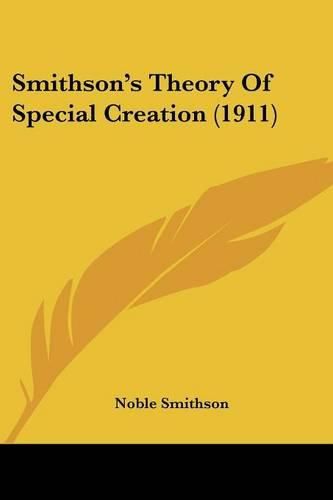Readings Newsletter
Become a Readings Member to make your shopping experience even easier.
Sign in or sign up for free!
You’re not far away from qualifying for FREE standard shipping within Australia
You’ve qualified for FREE standard shipping within Australia
The cart is loading…






Purchase of this book includes free trial access to www.million-books.com where you can read more than a million books for free. This is an OCR edition with typos. Excerpt from book: Sec. 4. Atoms The words atom and atoms will be often used in the following pages. Therefore, it is deemed proper to state the nature and properties of an atom, so far as known. It is denned as: An extremely minute particle of matter; a hypothetical particle of matter, so minute as to admit of no division; an ultimate indivisible particle of matter. (Cent. Die. 1, p. 365.) The Encyclopedia Britannica says: Atom is a body which cannot be cut in two. The Atonic theory is a theory of the constitution of bodies, which asserts that they are made up of atoms. (Encyc. Brit. 3, p. 36.) A molecule is the smallest mass of any substance, which is capable of existing in a separate form; that is the smallest part, into which the substance can be divided without destroying its chemical identity. A molecule of any substance is conceived of as made up of two or more atoms. (Cent. Die. 5, p. 3822.) In biology a cell is denned, first, as the fundamental form-element of every organized body. Secondly, as a nucleated, capsulated form element of any structure or tissue; one of the protoplasmic bodies, which build up an animal fabric; a body consisting of cell-substance, cell-wall and cell-nucleus, as bone- cell, etc. (Cent. Die. 1, p. 878.) The body of every animal and plant is made of cells; and each cell is composed of many atoms. For a full discussion of The Atomic Theory, see Encyc. Brit. 3, pp. 36-49, (9th ed.); New Int. Encyc. 13, pp. 683-685. Sec. 5. Cells and Cell Theory In Biology, the word cell denotes the fundamental form-element of every organized body. It is a bioplastic mass of protoplasm, varying in size and shape, generally of microscopic dimensions, capable, under proper conditions, of performing the functions of sensation, nutrition, reproduction and automatic …
$9.00 standard shipping within Australia
FREE standard shipping within Australia for orders over $100.00
Express & International shipping calculated at checkout
Stock availability can be subject to change without notice. We recommend calling the shop or contacting our online team to check availability of low stock items. Please see our Shopping Online page for more details.
Purchase of this book includes free trial access to www.million-books.com where you can read more than a million books for free. This is an OCR edition with typos. Excerpt from book: Sec. 4. Atoms The words atom and atoms will be often used in the following pages. Therefore, it is deemed proper to state the nature and properties of an atom, so far as known. It is denned as: An extremely minute particle of matter; a hypothetical particle of matter, so minute as to admit of no division; an ultimate indivisible particle of matter. (Cent. Die. 1, p. 365.) The Encyclopedia Britannica says: Atom is a body which cannot be cut in two. The Atonic theory is a theory of the constitution of bodies, which asserts that they are made up of atoms. (Encyc. Brit. 3, p. 36.) A molecule is the smallest mass of any substance, which is capable of existing in a separate form; that is the smallest part, into which the substance can be divided without destroying its chemical identity. A molecule of any substance is conceived of as made up of two or more atoms. (Cent. Die. 5, p. 3822.) In biology a cell is denned, first, as the fundamental form-element of every organized body. Secondly, as a nucleated, capsulated form element of any structure or tissue; one of the protoplasmic bodies, which build up an animal fabric; a body consisting of cell-substance, cell-wall and cell-nucleus, as bone- cell, etc. (Cent. Die. 1, p. 878.) The body of every animal and plant is made of cells; and each cell is composed of many atoms. For a full discussion of The Atomic Theory, see Encyc. Brit. 3, pp. 36-49, (9th ed.); New Int. Encyc. 13, pp. 683-685. Sec. 5. Cells and Cell Theory In Biology, the word cell denotes the fundamental form-element of every organized body. It is a bioplastic mass of protoplasm, varying in size and shape, generally of microscopic dimensions, capable, under proper conditions, of performing the functions of sensation, nutrition, reproduction and automatic …